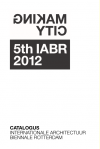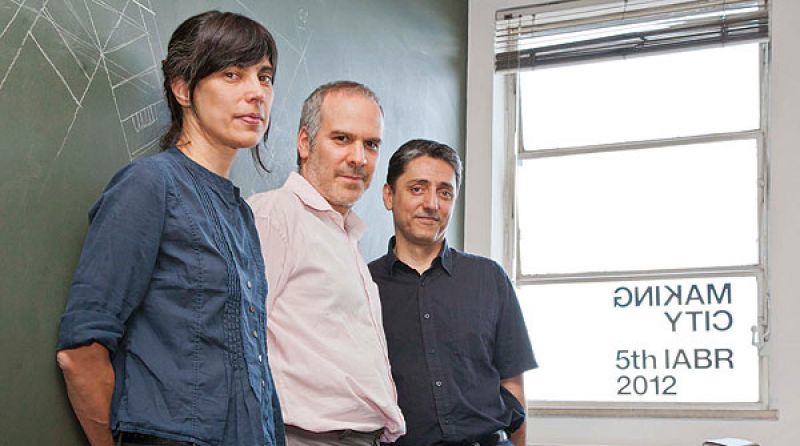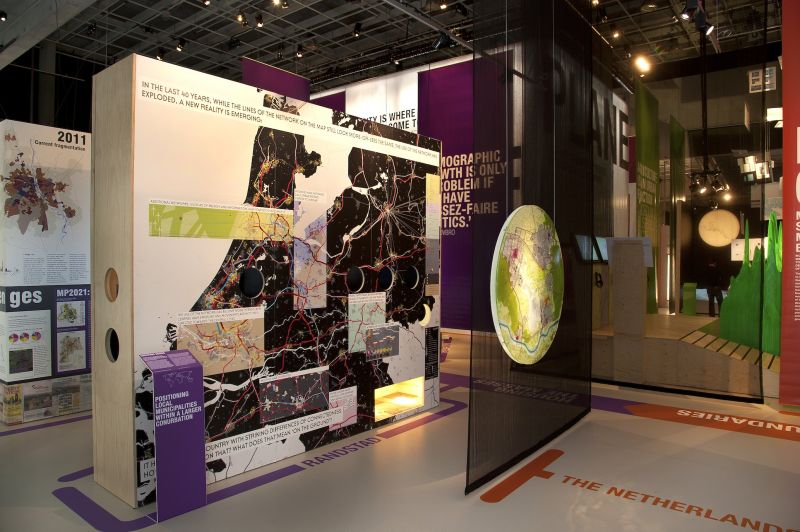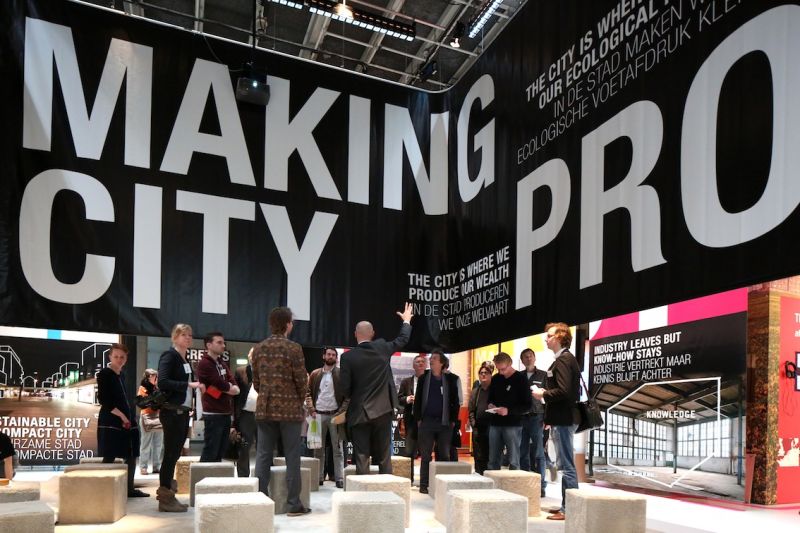
picture: Ossip van Duivenbode
How do we make city? That was the issue at the heart of the 5th IABR: Making City. Ongoing urbanization is creating gigantic political, social, economic and ecological challenges. These challenges manifest themselves in our cities which is also where we will have to find solutions. No cities, no future. And our cities can only take us to a better future if we do a better job of designing, planning and governing them.
urban agenda
The world is urbanizing at a rapid pace. By about 2050 more than seven of the nine billion people on earth will live in cities. The major socio-economic and ecological issues of this century are therefore urban problems. At the same time, ninety percent of our wealth is generated in cities.
The 5th IABR: Making City is convinced that our future is in the city. But are our cities ready for that future? Can we develop new and better instruments and methods for ‘making city’?
Making City was a call to all involved – administrators, policymakers, politicians, entrepreneurs, designers and citizens: If making city is what we have to do, we must really go about it differently, by building strong alliances, by formulating an urban agenda, and by putting design first.

A short introduction to the 5th IABR: Making City.
© IABR, 2012
IABR research and development
Just as in earlier Biennales, the 5th IABR: Making City produced its own research and development program focusing, both theoretically and concretely on the interplay between planning, design and politics. With three IABR–Test Site projects, in São Paulo, Istanbul and Rotterdam, as well as seven collaborative projects with the Dutch government and a selection of ‘best practices’ from around the world, the IABR explored ways of ‘making city’ that may be future proof.
35 projects from over 25 cities around the world were presented in Rotterdam. From places such as New York, Paris, São Paulo, Delhi, as well as Rotterdam, The Hague, Groningen and Almere, these projects show that standard solutions are no longer sufficient. In the future, city development will involve much more interplay between different disciplines. Continually changing alliances will have to balance their social agenda and economic ambitions. Only then will cities be the solution for the major socio-economic and ecological challenges that now face us.
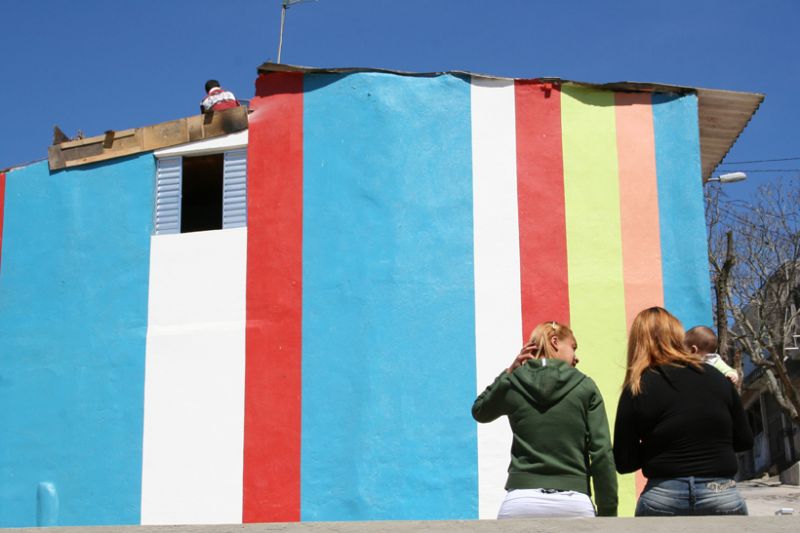
picture: George Brugmans
More on the website of the 5th IABR: Making City


